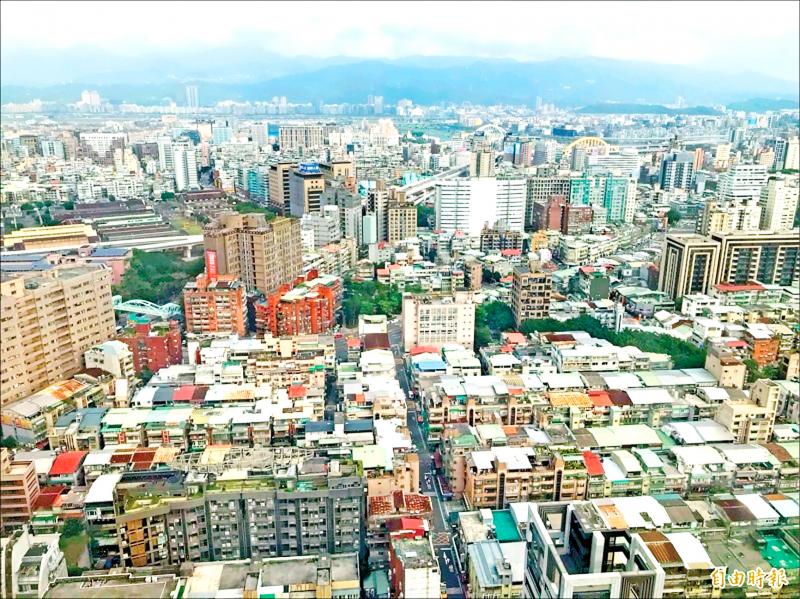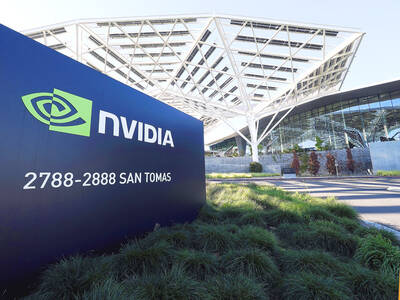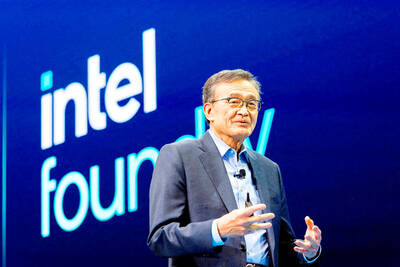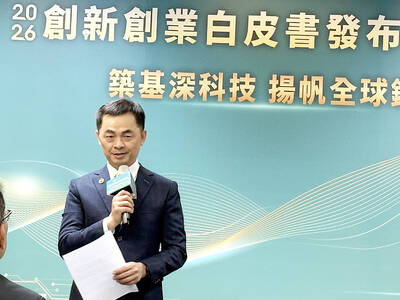The urban land price index for Taipei grew at slightly faster than elsewhere in Taiwan during the second and third quarters of last year, data released by the Ministry of the Interior on Friday showed.
The urban land price index — the weighted average land price of urban areas, which is measured every six months — rose 1.54 percent for Taipei in the April-to-September period compared with the previous six months, the data showed.
The increase reflected a relatively low comparison base in the previous six months, when initial fears over the COVID-19 pandemic hurt the city’s property market, and a stabilization of property prices later in the year, the ministry said in a statement.

Photo: Hsu Yi-ping, Taipei Times
Taipei’s Nangang District (南港) saw the biggest gains of the city’s 12 districts, with its land prices rising 1.86 percent because of improving public transportation and a growing population fueled by development in the district, the ministry said.
The urban land price index for Taiwan as a whole rose 1.04 percent in the April-to-September period compared with the previous six months, and increased 1.21 percent from a year earlier.
The urban land price index is based on the median land price for residential and commercial property and industrial zones in a city or county to show land price fluctuations. The ministry releases the index data twice a year, in January and in July.
As for the five other special municipalities, the index rose 1.3 percent in New Taipei City, 1.09 percent in Tainan, 0.77 percent in Taoyuan, 0.76 percent in Taichung and 0.5 percent in Kaohsiung, the ministry’s data showed.
New Taipei City benefited from efforts to develop the MRT rail system, and Tainan was boosted by large investments in Southern Taiwan Science Park (南部科學園區).
The index for outlying Lienchiang County fell 0.09 percent from the previous period — the only one of Taiwan’s 16 other cities and counties to show a decline in prices.

CHIP RACE: Three years of overbroad export controls drove foreign competitors to pursue their own AI chips, and ‘cost US taxpayers billions of dollars,’ Nvidia said China has figured out the US strategy for allowing it to buy Nvidia Corp’s H200s and is rejecting the artificial intelligence (AI) chip in favor of domestically developed semiconductors, White House AI adviser David Sacks said, citing news reports. US President Donald Trump on Monday said that he would allow shipments of Nvidia’s H200 chips to China, part of an administration effort backed by Sacks to challenge Chinese tech champions such as Huawei Technologies Co (華為) by bringing US competition to their home market. On Friday, Sacks signaled that he was uncertain about whether that approach would work. “They’re rejecting our chips,” Sacks

NATIONAL SECURITY: Intel’s testing of ACM tools despite US government control ‘highlights egregious gaps in US technology protection policies,’ a former official said Chipmaker Intel Corp has tested chipmaking tools this year from a toolmaker with deep roots in China and two overseas units that were targeted by US sanctions, according to two sources with direct knowledge of the matter. Intel, which fended off calls for its CEO’s resignation from US President Donald Trump in August over his alleged ties to China, got the tools from ACM Research Inc, a Fremont, California-based producer of chipmaking equipment. Two of ACM’s units, based in Shanghai and South Korea, were among a number of firms barred last year from receiving US technology over claims they have

BARRIERS: Gudeng’s chairman said it was unlikely that the US could replicate Taiwan’s science parks in Arizona, given its strict immigration policies and cultural differences Gudeng Precision Industrial Co (家登), which supplies wafer pods to the world’s major semiconductor firms, yesterday said it is in no rush to set up production in the US due to high costs. The company supplies its customers through a warehouse in Arizona jointly operated by TSS Holdings Ltd (德鑫控股), a joint holding of Gudeng and 17 Taiwanese firms in the semiconductor supply chain, including specialty plastic compounds producer Nytex Composites Co (耐特) and automated material handling system supplier Symtek Automation Asia Co (迅得). While the company has long been exploring the feasibility of setting up production in the US to address

OPTION: Uber said it could provide higher pay for batch trips, if incentives for batching is not removed entirely, as the latter would force it to pass on the costs to consumers Uber Technologies Inc yesterday warned that proposed restrictions on batching orders and minimum wages could prompt a NT$20 delivery fee increase in Taiwan, as lower efficiency would drive up costs. Uber CEO Dara Khosrowshahi made the remarks yesterday during his visit to Taiwan. He is on a multileg trip to the region, which includes stops in South Korea and Japan. His visit coincided the release last month of the Ministry of Labor’s draft bill on the delivery sector, which aims to safeguard delivery workers’ rights and improve their welfare. The ministry set the minimum pay for local food delivery drivers at